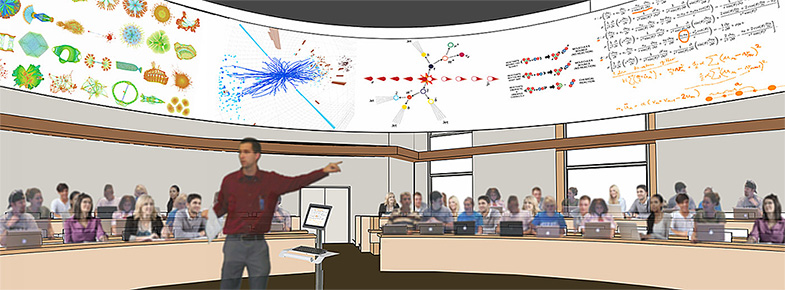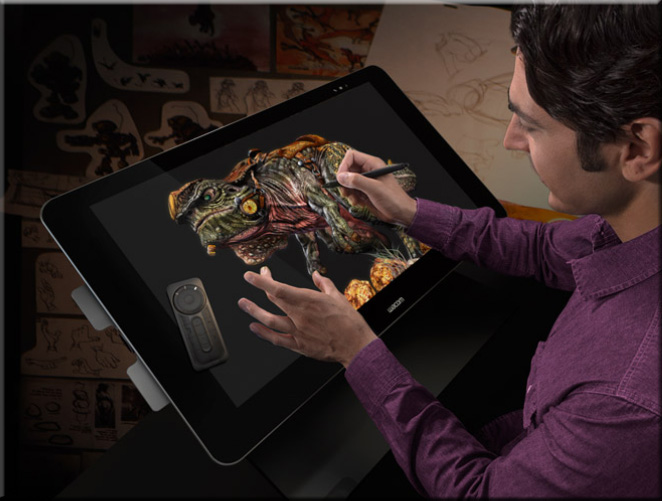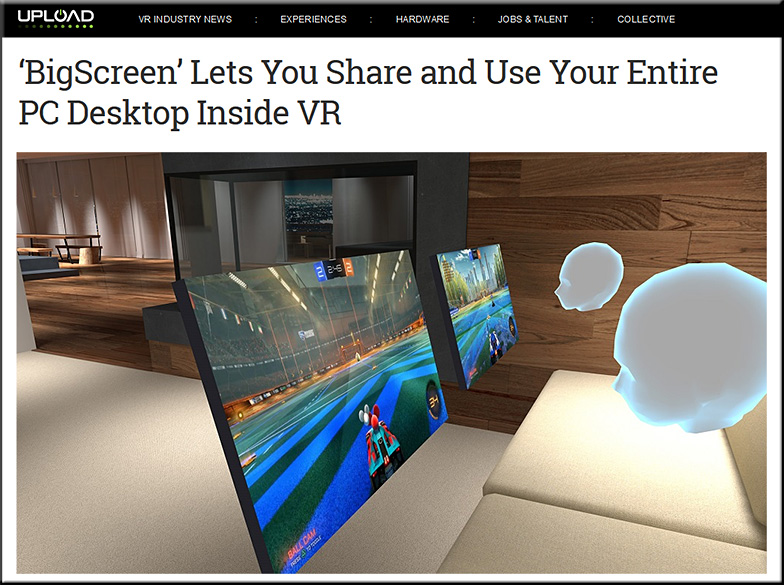From DSC:
Problem/question:
If you wanted to, how do you make a digital version of 20+ feet worth of writings and drawings on 2+ chalkboards or whiteboards that are put together?

The applications that I’ve run across so far — whether they are meant for PCs, Macs, tablets, or smartphones — don’t do it, as they’re too limited on screen real estate.
Some have tried using lightboards and making recordings of their equations or other work….

…but those solutions seem to fall short, at least in my mind, if you need to reference something early on in the long equation…you know, on that first “board” of information that you completed and then erased. (I suppose if a student was watching a recording, you could tell them to go back to Marker 1 in the video…and they can go back and review that portion of the video…but that requires more time/editing/setup. Time that faculty members often don’t have.) So, again, lightboards seem somewhat limited in their real estate.
Then, a while back, I saw this 360-degree ring of display screens at Washington State University…

and it got me to thinking…hmmm…yes…if, as a faculty member was using an application that they could write on and the equation could appear on the screens overhead. Faculty could use something akin to a pen & touch display from Wacom in order to write the equations — but the software would need to allow them to scroll backwards and forwards throughout their long equations. They could use those tools to highlight or further annotate something that was previously covered.
In this type of physical/AV-related solution, it would seem that the students would be best situated on the inside of the circle, looking upwards to watch the equation build on itself. Having a huge amount of digital space to work with could mean that they could turn their Node Chairs around to see any portion of the equation. Faculty members could also, I suppose, use laser pointers to point to something up on the displays.
Again though, they would need to be able to scroll left to right, top to bottom, say on something like the 160 acres (vs 20+ feet of chalkboard/whiteboard) you get on a workspace in Bluescape…
…then you would have a lot of digital real estate to work with. So that was one approach I was wondering about.
But then, I saw some interesting items regarding Virtual Reality, and POW! There it is! An enormous amount of digital screen real estate where the users could go where they wanted to on it. That is, the vision here would be that each student could control where they want to go within the digital canvas.
Some related items to this:
See:
Virtual Desktop 1.0 Trailer
Obviously, I need to further think this through and investigate what’s possible as time goes by. But I wanted to get this out there in case some vendor can help us get there sooner rather than later.
A relevant link:
Playing games on a 19-foot TV, climbing mountains and shooting bows — from polygon.com by Brian Crecente
Excerpt:
But the one I found most compelling was the most mundane creation for Vive: The SteamVR Desktop Theater Mode. Slip on the black plastic headset and instead of dropping into a fantastical world of mouthy orbs, atop a mountain with a robot dog or inside a game, I found myself sitting in a chair in a fairly non-descript room facing a big television screen. To be specific, in this case big means about 19 feet.
Addendum of something that’s relevant here and that I just ran across today:
- The Future of AV Displays — from thejournal.com by Dennis Pierce
Today, students are interacting with content on large touchscreen flat panels. Soon, they could be using immersive head-mounted displays.












